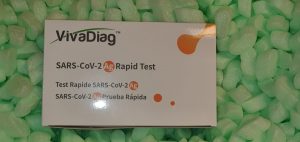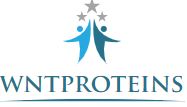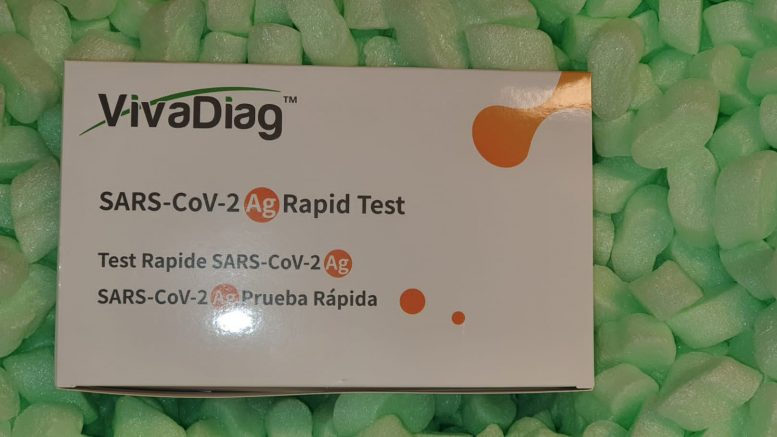Recent research have proven that spindle and kinetochore-associated protein 2 (SKA2) is dysregulated in a number of tumors and acts as a key regulator of tumor development. However, whether or not SKA2 performs a task in hepatocellular carcinoma (HCC) has not been absolutely elucidated. The goal of this examine was to discover the expression, perform and underlying molecular mechanism of SKA2 in HCC. We discovered that SKA2 was extremely expressed in HCC tissues and cell strains.
Knockdown of SKA2 brought on marked reductions in the proliferative, colony-forming and invasive capacities of HCC cells, whereas SKA2 overexpression had reverse results. Further experiments revealed that overexpression of SKA2 enhanced expression ranges of phosphorylated glycogen synthase kinase-3β (GSK-3β) and energetic β-catenin in HCC cells. Moreover, SKA3 overexpression enhanced transcriptional exercise mediated by Wnt/β-catenin signaling. Knockdown of SKA3 downregulated the activation of Wnt/β-catenin signaling, and the impact was considerably reversed by the inhibition of GSK-3β.
Notably, inhibition of Wnt/β-catenin signaling markedly abrogated SKA2-mediated promotion impact on HCC proliferation and invasion. In addition, knockdown of SKA2 impeded tumor formation and development in HCC cells in a nude mouse in vivo mannequin. Overall, these findings point out that SKA2 accelerates the development of HCC by way of the upregulation of Wnt/β-catenin signaling. Our examine highlights a possible function of SKA2 in HCC development and suggests it as a doable goal for HCC remedy.
Keratinocyte Growth Factor-2 Reduces Inflammatory Response to Acute Lung Injury Induced by Oleic Acid in Rats by Regulating Key Proteins of the Wnt/ β-Catenin Signaling Pathway
Reducing irritation can successfully relieve acute lung harm (ALI). Objective. To take a look at whether or not keratinocyte development factor-2 (KGF-2) can scale back oleic acid-induced irritation in ALI of rats and discover its doable mechanism. Methods. 45 Sprague-Dawley rats had been randomly divided into management group, ALI group, and ALI + KGF-2 group. The animal mannequin of acute lung harm was established by injecting 0.1 mL/kg oleic acid into the tail vein of rats. Rats in the management group had been injected with equal quantity of regular saline (NS). Each group wants pretreatment 72 hours earlier than the preparation of the acute lung harm mannequin.
The management group and ALI group had been instilled with 5 ml/kg NS by way of the airway, and the identical quantity of KGF-2 was instilled in the ALI + KGF-2 group. It takes eight hours to efficiently put together the ALI mannequin. Observe the pathological modifications of lung tissue by way of mild microscopy, ultrastructural modifications by way of electron microscopy, and the lung wettability/dry weight (w/d) ratio and lung permeability index (LPI). By detecting modifications in inflammatory elements in lung tissue and modifications in the quantity of BALF cells, the modifications in irritation in every group had been noticed.
The expressions of Wnt5a, β-catenin, and APC in lung tissue had been detected by immunohistochemistry and Western blot. The modifications of key proteins in Wnt/β-catenin signaling pathway in the lung tissue of every group had been noticed. Result. Compared with the ALI group, after KGF-2 pretreatment, the diploma of lung harm was decreased, the expression of inflammatory elements was decreased, and the quantity of pink blood cells and white blood cells in BALF was decreased. It will also be noticed that the expression of Wnt5a, β-catenin, and APC, a key protein in the Wnt/β-catenin signaling pathway, is decreased.
The evaluation confirmed that the quantity of inflammatory elements, pink blood cells, and white blood cells in BALF was positively correlated with the expression of Wnt5a, β-catenin, and APC. Conclusion. KGF-2 could scale back the inflammatory response in ALI induced by oleic acid by regulating key proteins in the Wnt/β-catenin signaling pathway.

Knockdown of DNA binding protein A (dbpA) enhances the chemotherapy sensitivity of colorectal most cancers via suppressing the Wnt/β-catenin/Chk1 pathway
DNA-binding protein A (dbpA) is reported to be upregulated in lots of cancers and related to tumor progress. The current examine aimed to analyze the function of dbpA in 5-Fluorouracil (5-FU)-resistant and Oxaliplatin (L-OHP)-resistant colorectal most cancers (CRC) cells. We discovered that 5-FU and L-OPH remedy promoted the expression of dbpA. Enhanced dbpA promoted the drug resistance of SW620 cells to 5-FU and L-OHP. DbpA knockdown inhibited cell proliferation, induced cell apoptosis and cell cycle arrested in SW620/5-FU and SW620/L-OHP cells. Besides, dbpA shRNA enhanced the cytotoxicity of 5-FU and L-OHP to SW620/5-FU and SW620/L-OHP cells.
Meanwhile, dbpA shRNA inhibited the activation of the Wnt/β-catenin pathway that induced by 5-FU stimulation in SW620/5-FU cells. Activation of the Wnt/β-catenin pathway or overexpression of Chk1 abrogated the selling impact of dbpA downregulation on 5-FU sensitivity of CRC cells. Importantly, downregulation of dbpA suppressed tumor development and promoted CRC cells sensitivity to 5-FU in vivo. Our examine indicated that knockdown of dbpA enhanced the sensitivity of colorectal most cancers cells to 5-FU via Wnt/β-catenin/Chk1 pathway, and DbpA could also be a possible therapeutic goal to sensitize drug resistance colorectal most cancers to 5-FU and L-OHP. This article is protected by copyright. All rights reserved.
The Scaffold Protein Axin Promotes Signaling Specificity inside the Wnt Pathway by Suppressing Competing Kinase Reactions
Scaffold proteins are thought to advertise signaling specificity by accelerating reactions between certain kinase and substrate proteins. To take a look at the long-standing speculation that the scaffold protein Axin accelerates glycogen synthase kinase 3β (GSK3β)-mediated phosphorylation of β-catenin in the Wnt signaling community, we measured GSK3β response charges with a number of substrates in a minimal, biochemically reconstituted system.
We noticed an unexpectedly small, ∼2-fold Axin-mediated fee improve for the β-catenin response when measured in isolation. In distinction, when each β-catenin and non-Wnt pathway substrates are current, Axin accelerates the β-catenin response by stopping competitors with different substrates.
[Linking template=”default” type=”products” search=”Glutathione S-Transferase Tagged Proteins ELISA kit” header=”3″ limit=”166″ start=”4″ showCatalogNumber=”true” showSize=”true” showSupplier=”true” showPrice=”true” showDescription=”true” showAdditionalInformation=”true” showImage=”true” showSchemaMarkup=”true” imageWidth=”” imageHeight=””]
At excessive competitor concentrations, Axin produces >10-fold fee results. Thus, whereas Axin alone doesn’t markedly speed up the β-catenin response, in physiological settings the place a number of GSK3β substrates are current, Axin could promote signaling specificity by suppressing interactions with competing, non-Wnt pathway targets. This mechanism for scaffold-mediated management of competitors permits a shared kinase to carry out distinct features in a number of signaling networks.

